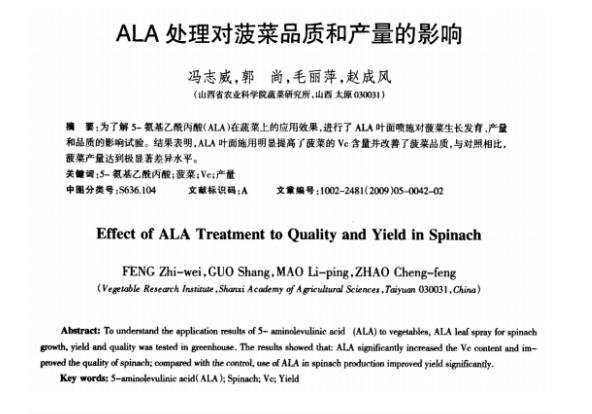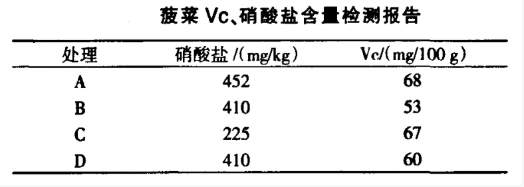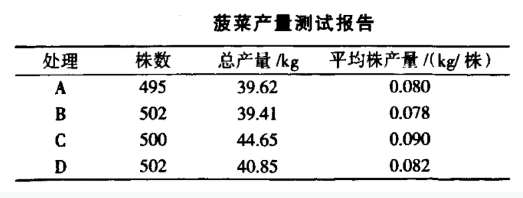
Zhiwei Feng et al. from the Vegetable Research Institute of Shanxi Academy of Agricultural Sciences published an article "Effects of ALA treatment on the quality and yield of spinach". In this experiment, spinach was used as the test material, and the effects of ALA on Vc and nitrate content in the whole growth and development of spinach were studied in 24 plots of soil in Shanxi Academy of Agricultural Sciences.
The experiment was divided into 4 groups -- A:0ml/L; B: 30mg/L; C: 60ml/L; D: 120ml/L
1. Effects of exogenous 5-ALA on Vc content and nitrate content in spinach

As can be seen from the table, after the treatment with exogenous 5-ALA, the nitrate content was significantly reduced, and the Vc content was basically consistent with the original content, among which group C (60mg/L) had the best effect, and the nitrate was reduced by 50.22% compared with the control.
Nitrate damage to human health is no less than pesticides, because nitrate is not only easy to induce diabetes, the damage to the kidney is also very serious
2. Effects of exogenous 5-ALA on the yield of spinach

As can be seen from the table, the leaf width and length of spinach were significantly increased by applying 5-ALA reagent 60mg/L, and the growth rate reached about 21%. Spinach is a leafy vegetable. Spraying 5-ALA increased the leaf width and leaf length of spinach, so the yield of spinach was also increased correspondingly, with an increase of 12.70% compared with the control.
The experimental results showed that after spraying exogenous 5-ALA on the leaf surface, the leaf width and yield of spinach could be significantly increased, and the nitrate content could be significantly reduced, which played a great role in improving the nutrient content and yield of vegetables and ensuring the safety of vegetables.